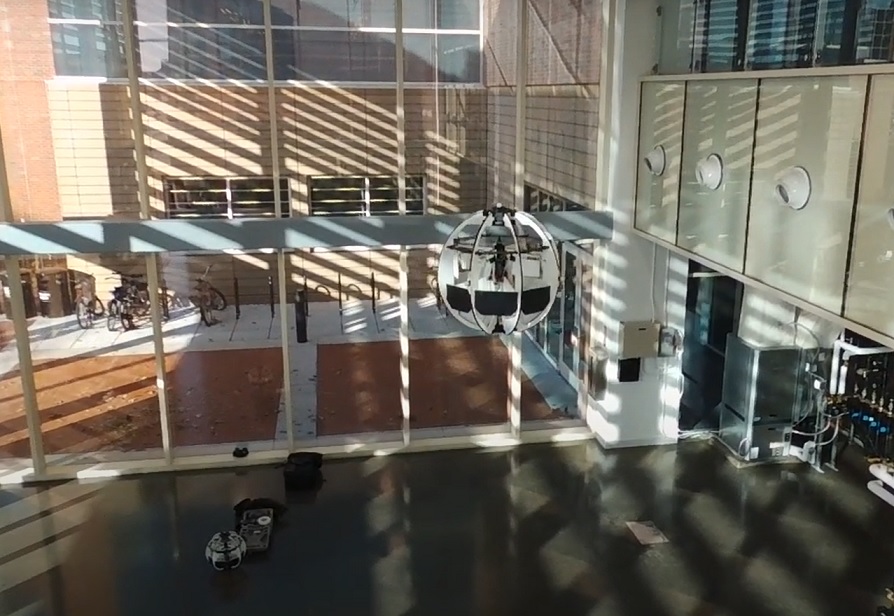This post is also available in:
 עברית (Hebrew)
עברית (Hebrew)
A new orb-shaped drone encased in a protective cage will aid in emergency response situations. The development was inspired by the rescue efforts during the Oklahoma City domestic terrorism bombing in 1995, when rescuers could not locate victims without risking their own lives to climb throughout what was left of the Murrah federal Building.
Typical drones have exposed propellers and require a coordinated landing. If one turns over, it can’t right itself. The All Terrain Land and Air Sphere (ATLAS) drone developed by the Unmanned Systems Research Institute at Oklahoma State University (OSU) is encased in a protective cage.
“With something like the Murrah bombing scene, most exposed propeller platforms like a quadcopter can easily get caught by the debris or dangling wires in the building,” said Dr. Ben Loh, USRI graduate and research engineer. “A quadcopter without a prop guard could accidentally hit an obstacle and flip over. This could mean the end of the mission since it cannot recover to flight.”
Interested in learning more about innovative drones? Attend the AUS&R Unmanned Systems and Robotics Conference and Exhibition on September 6, 2020
The new drone’s spherical cage protects the propellers from debris and people from the propellers, according to okstate.edu. Furthermore, the ability to land ATLAS in uneven terrain is essential. Stopping the propellers gives rescuers a greater chance of communicating with victims. “Noise from the propellers is always an issue if using a microphone to pick up the victim’s voice at a disaster area,” Loh said. “One way to overcome that is to land the vehicle to stop the propeller.”
The new drone is designed to carry a payload specific to the mission, from cameras and CO2 sensors to LiDAR, an instrument that uses pulses of laser light to build a complex three-dimensional terrain map.
ATLAS’s design is also scalable. Loh has been working on reducing the weight and size from 17 inches to 13 inches to improve its battery life. Although optimized for indoor flight, ATLAS can be used on outdoor missions. “The research is ongoing to make ATLAS more efficient as battery (power) remains the limitation for most drones today,” Loh said.
Interested in learning more about advanced unmanned vehicle technologies? Attend the AUS&R Unmanned Systems and Robotics Conference and Exhibition on September 6, 2020


























